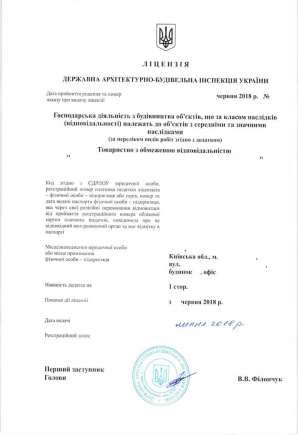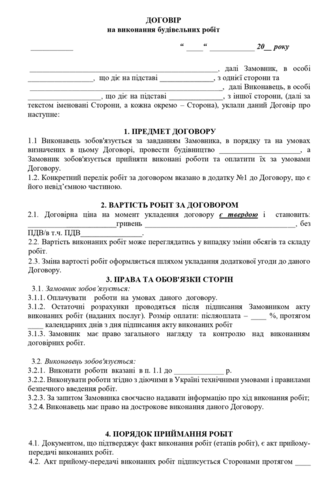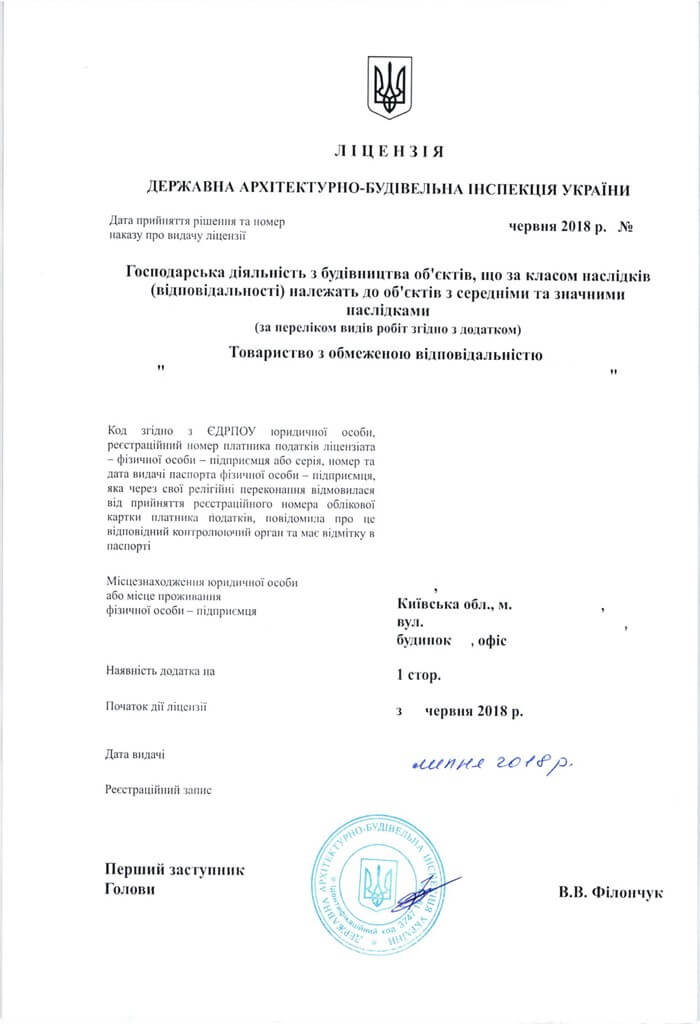Difference between classes of consequences CC1, CC2, CC3 and how to determine them
Cost of services:
Reviews of our Clients
Quick response forse "Tiger" LLC expresses gratitude to Law firm «Pravova dopomoga» for long-term cooperation, which brings only positive results.
Today, construction business is a rather common type of business. Now, there are many developers, who are ready to invest in construction of new high-rise buildings with the subsequent sale of finished apartments. However, it is necessary to understand some issues in order to start a construction.
First, let’s elaborate on the classes of consequences: their types and the correlation of the classes of consequences with the categories of complexity.
IMPORTANT! For the period of martial law in Ukraine, licenses for construction activities are not issued. But the work can be started by completing and submitting the Declaration. Our company can help you with the submission of the Declaration. We keep our finger on the pulse, and monitor the moment of starting the submission of documents for licenses. As soon as the licensing authority begins full-fledged work, you will know about it!
Contact the specialists for the execution of the Declaration on the start of construction. The declaration is drawn up separately for each construction object.
Let`s start with the definition of terms.
As specified in paragraph 1 of Article 32 of the Law of Ukraine “On the Regulation of City Planning Activities”, the classes of consequences is a description of the level of potential threat to the health and lives of people who will permanently or periodically be in the building or outside the building, material damage or social losses associated with the failure or loss of integrity of the building.
From this definition, it can be concluded that the key feature that define the classes of consequences is the level of threat to the lives of people who are permanently or periodically staying in the building or outside the building. They also include the material and social losses that may be caused by the failure of the building.
The abovementioned Law provides for the following division of the classes of consequences: CC1, CC2, CC3. They have replaced the categories of complexity (I-V). The legislator decided to replace the categories with the classes, because dishonest developers found the way to use the declarative principle to begin their construction work. They downgraded the category of responsibility of the project by filing a declaration specifying category III instead of obtaining a construction permit for buildings of IV and V categories of complexity. The regulatory authority checked the documents for completeness within 5 days, and the construction company received the construction permit. It turns out that the correlation between the classes of consequences and categories of responsibility is as follows: CC1 covers I and II categories, CC2 - III and IV categories, and CC3 includes V category of complexity.
Now let’s elaborate on the classes of consequences.
The procedure for determining the classes of consequences is specified in the DSTU-N B.1.2.-16: 2013 (State Standards of Ukraine). The DSTU contains the list of characteristics of possible consequences. They include:
1.Potential threat to the health and lives of people:
а. who are permanently staying in the building;
б. who are periodically staying in the building;
в. who are staying outside the building;
2.Potential economic damage, minimum wage rate;3.Loss of cultural heritage sites, categories of sites;
4.Shutdown of transport, communications, energy and other engineering networks.
Each class has its own definition, so that they can be distinguished:
| Classes of consequences | Characteristics of the classes of consequences arising from failure of houses, buildings, structures, infrastructural facilities. |
||||||
|---|---|---|---|---|---|---|---|
| Potential threat to the health and life of people | Potential economic damage, minimum wage rate | Loss of cultural heritage sites, categories of sites | Shutdown of transport, communications, energy and other engineering networks, level | ||||
| Permanently staying in the building* | Periodically staying in the building** | Staying outside the building *** |
|||||
|
СС1- low consequences (Residential buildings not exceeding 4 storeys) |
No more than 50 persons | No more than 100 persons | No more than 100 persons | No more than 2,500 persons | _ | _ | |
| СС2- medium consequences (Residential buildings measured at 100 meters height max.) | from 50 to 400 persons | from 50 to 1,000 persons | from 1,000 to 50,000 persons | from 2,000 to 150,000 persons | local character |
regional, local |
|
|
СС3- high consequences (shall be assigned if at least one of the features is available) |
More than 400 persons | More than 1,000 persons | More than 50,000 persons | More than 150,000 persons | national character | countrywide | |
* - When calculating the number of persons whose life and health may be threatened, consideration is given only to people who are permanently staying in the building for more than 8 hours a day and at least 150 days a year (at least 1,200 hours a year on average) shall be .
** - In the case of people who are staying in the building from time to time, they must be there for no more than 8 hours a day, 150 days a year (450 -1,200 hours a year).
When determining the consequences of the buildings failure, consideration is given to the consequences that may be caused to the sites located near the building.
Conclusion
Thus, in order to set up a construction business before obtaining a construction license, you need to gain insight into the classes of consequences and correctly decide on their types. In order to determine the classes of consequences, you need to learn the legislation of Ukraine related to the construction activities.
In order to make sure that the class of consequences is determined correctly, that all the documents are properly and duly filled in and submitted to the regulatory authority, you can contact our lawyers, who have practical experience in determining the classes of consequences in particular, and extensive experience in the field of construction activities licensing in general.Our clients








